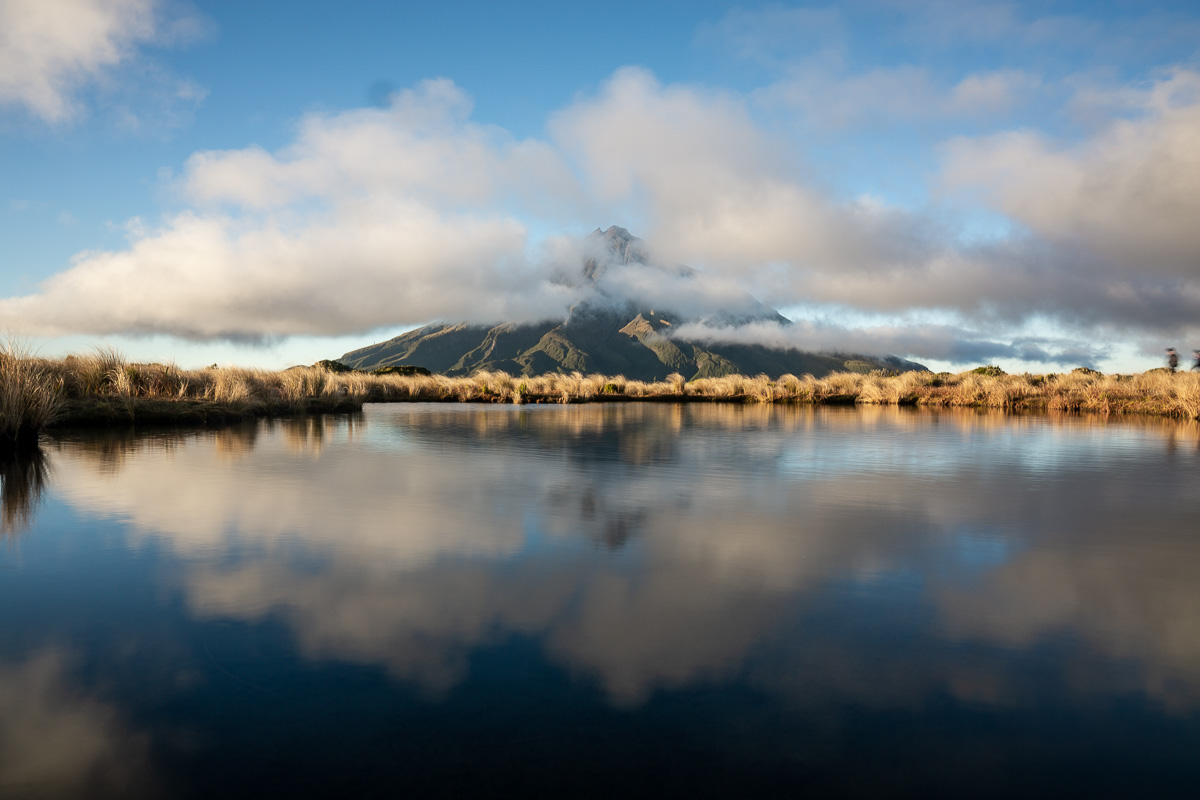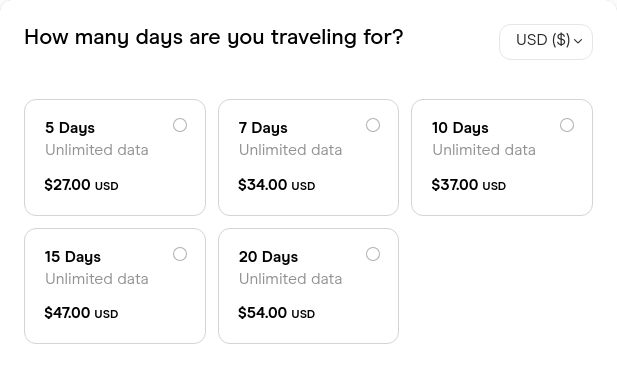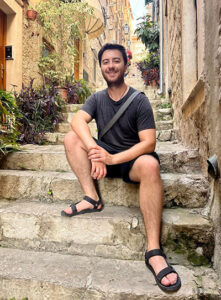
Best Tourist Sim Cards in New Zealand in 2024
Choosing a sim card is hard. We've analysed the best tourist sim cards in New Zealand across pricing, coverage and data. Find out the best pick!


If you’re planning a trip to New Zealand, having a reliable sim card is essential. With access to the internet, exploring new cities becomes a breeze. From finding top-notch restaurants to navigating your way to your accommodation, booking taxis, and sharing pictures with your loved ones, staying connected on the go is a must.
While roaming is an option, the hefty fees can quickly accumulate when traveling internationally. It’s always advisable to opt for an eSIM or a local sim card to enjoy local phone rates. Luckily, acquiring either of these options in New Zealand is incredibly simple.
This comprehensive guide provides you with all the information you need to know about purchasing a sim card in New Zealand, including updated pricing and the best sim card options for your needs.
There are three mobile networks in New Zealand: 2degrees, Vodafone and Spark. In terms of coverage and reliability, all three networks are fairly similar.
The best sim card in New Zealand is the Airalo NZ eSim. This eSim runs on the reliable One NZ network (recently rebranded from Vodafone) and allows you to choose the amount of data you need and at a similar price to the local sim cards. For just $25 NZD you can get 5GB of data, or for $43 NZD you get 10GB, however, you sacrifice the unlimited calls and texts.
Considering eSims are unquestionably the most convenient and efficient sim cards I consider this tradeoff more than worth it.
If you require the minutes or texts, or your phone isn’t eSim compatible (most phones, including all iPhones since 2018, work perfectly with eSims), then I recommend the 2degrees prepaid sim card.
All three providers offer similar packages, but 2degrees offers 30 days validity instead of just 28 days. I’ve used all three mobile operators in New Zealand and my experience with 2degrees has been the best.
A Tourist Sim Card in New Zealand costs between $25 NZD and $43 NZD in April 2024, however, the exact price will often depend on the store you visit and the plan you choose.
Alternatively, an eSim in New Zealand will cost between $4.50 USD and $44 USD. This, again, depends on how much data you require and which eSim provider you choose.
I generally recommend this Airalo plan for most tourists visiting New Zealand which includes 5GB of data which is valid for 30 days and costs $16 USD.
In New Zealand, there are two major SIM card providers that dominate the market – 2degrees and Spark. 2degrees, formerly known as Vodafone, offers a wide range of mobile services with competitive plans and deals. They provide reliable coverage across the country and have gained a strong customer base for their excellent customer service. On the other hand, Spark is another leading provider known for its extensive network coverage, including rural areas. They offer various plans tailored to different needs and provide options for both prepaid and postpaid users. Both 2degrees and Spark continually invest in improving their networks and expanding their coverage to ensure a seamless mobile experience for their customers.
2degrees is a telecommunications company in New Zealand offering tourist sim cards to travelers. Their sim cards provide affordable and reliable mobile services across the country. With 2degrees, tourists can stay connected with high-speed internet, make local and international calls, and send text messages at competitive rates. The company ensures tourists have a seamless experience with convenient top-up options and extensive network coverage throughout New Zealand. Enjoy your trip and stay connected with 2degrees’ tourist sim cards.
The price of a 2degrees tourist sim card in New Zealand is $45 NZD.
The plan offered by 2degrees stores includes 8GB data + unlimited calls & texts valid for 1 month.
One (formerly Vodafone) offers reliable and affordable tourist SIM cards in New Zealand. These SIM cards provide unlimited data, calls, and texts, making it easier for travelers to stay connected. With fast network coverage across the country, exploring New Zealand is hassle-free. One’s user-friendly app allows easy top-ups and provides access to exclusive deals and rewards. Stay connected with One’s tourist SIM cards and enjoy your trip to the fullest.
The price of a One (formerly Vodafone) tourist sim card in New Zealand is $40 NZD.
The plan offered by One (formerly Vodafone) stores offers 8GB + 100 minutes + 100 texts valid for 28 days.
Spark is a leading telecommunications company in New Zealand that offers tourist sim cards. These sim cards are designed specifically for travelers visiting New Zealand, providing them with seamless connectivity during their stay. With Spark’s tourist sim cards, travelers can enjoy unlimited local calls and texts, as well as generous data allowances to stay connected and share their adventures online. Stay connected with Spark’s reliable network while exploring the stunning landscapes and vibrant cityscapes of New Zealand.
The price of a Spark tourist sim card in New Zealand is $40 NZD.
The plan offered by Spark stores includes 4.5GB data valid for 28 days.
Identify mobile providers: 2degrees, One (formerly Vodafone) and Spark are your best options in New Zealand.
Find your nearest store: Locate a store or retailer by searching on Google Maps for your nearest store or asking at your hotel reception. I’ve never had issues finding a store as they can usually be found in major cities, shopping centers, or tourist areas. If possible, I always recommend to to avoid airports and head in to an official store in the city.
Bring the necessary documents: It is always a good idea to carry your passport or identification documents for sim card registration purposes. We’ve found most providers will need to confirm your identity to provide a sim card and it can be a major hassle to head to a store only to have to come back again later with your passport.
Choose your plan: Either request the plan you are after or consult with the staff in the store to select the right plan for you. My recommendations at the beginning of this guide are a good starting point, but the staff will usually be able to suggest the best option.
Pay and activate your card: Pay for the SIM card and plan, and the staff will activate it for you.
Test: It’s always a good idea to check that you can access the internet before you leave the store. I always search for something on Google then refresh my Instagram feed to check it’s working fine.
Buying a prepaid sim card for New Zealand at the airport is usually considered the most convenient option for travellers arriving by plane.
However, airport stores selling sim cards are almost guaranteed to charge inflated prices, so if you are a cost-conscious traveller then you should definitely buy your sim card from a store in the city center.
In addition to this, we would argue that buying physical sim cards at all aren’t particularly convenient now that most people use esim compatible phones. If you are looking for the most convenient option, then buying an esim before you arrive or with the airport wifi is much easier and will save you having to queue up or communicate with staff.
If you must purchase a sim card at the airport in New Zealand then you will be in luck. All major international airports in New Zealand have stores selling sim cards. Despite the prices being higher than normal, the staff are knowledgable and will be able to get you set up with the correct sim card relatively quickly.
If you want to avoid the inflated sim card prices you’ll find at the airport and your phone isn’t esim compatible, then you’re going to need to head in to a store to buy your sim card.
I recommend visiting one of the official retail stores of the mobile internet operators such as 2degrees, One (formerly Vodafone) and Spark. Your best option is to enter their names into Google Maps and find the branch closest to your hotel or accommodation. Typically the staff in the official stores in New Zealand are knowledgable and helpful which means you can ensure you’ll walk away with a functioning sim card.
Despite this, it’s always a good idea to check your internet is working before you leave the store by loading a Google search results page and your preferred social media app. You should also ensure you always bring your passport with you when purchasing a sim card in case they need to register it.
If you like to be prepared and would prefer to arrive in New Zealand with your sim card all sorted and your phone ready to connect to the internet immediately then you should look into purchasing a sim card online.
The first option is to buy your sim card in advance via SimOptions, which is a company that will prepare and ship a sim card directly to your door. It’s a reliable and effective service, but with the invention of eSims it’s becoming obsolete.
The better option is to purchase an eSim online. We’ve written more on that below!
An eSim is a digital version of a traditional sim card and is most likely the future of connectivity for mobile devices. The convenience of no longer visiting a store, handing over your passport and purchasing a physical sim card is quickly making physical sim cards obsolete in favour of eSims.
We recommend Airalo’s eSim when travelling to New Zealand. The Airalo New Zealand eSim offers fast internet speeds, wide coverage and extremely competitive prices making it a far more compelling option than purchasing a physical sim card from any of the local sim card providers.
In order to get set up with an Airalo eSim, all you need to do is visit Airalo here and purchase the eSim online (the $16 USD plan is suitable for most travellers). Once you’ve purchased the sim card Airalo will email you instructions and a QR code. Following these instructions should take just a couple of minutes, then you’ll have a sim card in New Zealand without having to venture outside.
Our preferred eSim provider in New Zealand is Airalo. We used them, alongside a local sim card on another device, for our most recent trip to New Zealand and found the service to be equal to the local sim card but without the hassle of acquiring a sim card in a store.
Airalo’s New Zealand eSim uses the One NZ to provide data and connect users to the internet. You can expect very good coverage and reliability with the One NZnetwork as they are amongst the best mobile internet operators in New Zealand.
Here are the plans and prices for Airalo’s New Zealand eSim:
1GB data valid for 7 days – Price: $4.50 USD
2GB data valid for 15 days – Price: $8.50 USD
3GB data valid for 30 days – Price: $11 USD
5GB data valid for 30 days – Price: $16 USD
10GB data valid for 30 days – Price: $27 USD
20GB data valid for 30 days – Price: $44 USD
For most travellers we recommend the 5GB data plan for $16 USD which is valid for 30 days. Some travellers may prefer a larger plan, whilst travellers visiting for just a couple of days may be fine with a smaller plan.

An alternative eSim provider we can recommend is Holafly.
Holafly’s eSim is a suitable option for travellers who require large amounts of data, such as digital nomads and people who work online while they travel. All of Holafly’s New Zealand eSims offer unlimited data.
Holafly’s New Zealand eSim uses the Vodafone/NZC/Sparknetwork to provide data and connect users to the internet. This network will provide reliable speeds and coverage while in New Zealand
Here are the plans and prices for Holafly’s New Zealand eSim:
10GB data valid for 30 days – Price: $34 USD
20GB data valid for 30 days – Price: $44 USD

An eSIM, also known as an embedded SIM, is a type of digital SIM card that is built directly into a device, like a smartphone, tablet, or smartwatch. Unlike traditional SIM cards, an eSIM doesn’t require a physical card to be inserted or removed from the device.
Instead, the eSIM is seamlessly integrated into the hardware of the device and can be remotely activated and programmed by a mobile network operator. This allows users to switch between different mobile networks or plans without the need to physically swap SIM cards.
The utilization of eSIM technology offers numerous benefits, including convenience, flexibility, and user-friendliness. This is particularly advantageous for individuals who frequently change mobile networks or travel internationally. With eSIMs, there’s no longer a necessity to purchase and insert physical SIM cards, making it much more convenient to manage multiple mobile connections on a single device.
Activating an eSIM involves either scanning a QR code provided by the mobile network operator or manually entering the activation details. Once the eSIM is activated, the device can connect to the selected mobile network and access voice, data, and messaging services, just like with a traditional SIM card.
There are a variety of reasons why using an eSIM can be beneficial. Firstly, it offers convenience as there is no need to physically insert or remove a SIM card when switching between mobile networks or plans. This is particularly advantageous for frequent travelers who may need to switch networks or use local SIM cards in different countries.
Additionally, eSIM enables dual SIM functionality, allowing two active mobile numbers on the same device. This is useful for keeping personal and work numbers separate or managing multiple phone lines.
Furthermore, eSIMs save space within the device as they are embedded, eliminating the need for a physical SIM card slot. This allows manufacturers to make smaller devices or utilize the spare space for other components.
With eSIMs, activation and management of mobile plans can be done remotely over the air. This means that activation or switching to a new plan can be done without a physical SIM card or the need to visit a store. This grants greater flexibility and convenience in managing your mobile connectivity.
Moreover, using an eSIM-compatible device ensures future-proofing as more mobile networks and service providers offer support for eSIMs. This allows users to take advantage of new services and offerings as they become available.
Overall, eSIM technology provides flexibility, convenience, and future-proofing for mobile connectivity, making it an appealing choice for many users.
eSIM technology is becoming increasingly popular and is supported by a growing number of smartphones and other devices. Here are some examples of eSIM-compatible phones:
Apple iPhone series (iPhone 11, iPhone 12, iPhone 13, etc.): Apple was one of the early adopters of eSIM technology and offers support for eSIM on various iPhone models.
Google Pixel series (Pixel 3, Pixel 4, Pixel 5, etc.): Google’s Pixel smartphones also support eSIM functionality, allowing users to activate and use eSIMs.
Samsung Galaxy series (Galaxy S22, Galaxy Note 20, etc.): Many of Samsung’s flagship devices now come with eSIM support, enabling users to utilize eSIM technology.
OnePlus devices (OnePlus 7, OnePlus 8, etc.): OnePlus has included eSIM support in some of its smartphone models, offering users the flexibility of using eSIMs.
Motorola Razr (2020): The latest iteration of the iconic Motorola Razr features eSIM compatibility, enabling users to use eSIMs for cellular connectivity.
These are just a few examples, and the list of eSIM-compatible phones continues to expand as more manufacturers embrace this technology. There’s a very strong chance your phone supports eSims so if you’re unsure we recommend looking it up on our list of eSim supported phones.
Using an eSim is new for many travellers, however, the good news is it’s surprisingly easy to get set up – even for the technologically challenged!
Here’s a general guide on how to use an eSIM:
Check eSIM Compatibility: Ensure that your device supports eSIM functionality. Many newer smartphones, smartwatches, tablets, and other devices are eSIM compatible including all iPhones produced since 2018.
Obtain an eSIM: There are multiple ways to acquire an eSIM. You can purchase an eSIM online from a provider like Airalo (which we recommend) or directly from a mobile network operator. Some devices also allow you to scan a QR code provided by your carrier to download the eSIM profile.
Activate the eSIM: Your eSim provider will send you instructions to activate the sim. This will usually involve scanning a QR code, entering an activation code, or downloading the eSIM profile directly onto your device.
Set up the eSIM: Once activated, your device will guide you through the eSIM setup process. This typically involves selecting the eSIM as your preferred mobile plan, configuring settings like data roaming, and entering any necessary authentication details.
Enjoy the Connection: Once the eSIM is set up, you can use it as you would with a physical SIM card. Make calls, send messages, browse the internet, and use data services as needed. You can also switch between eSIM profiles if you have multiple eSIMs installed on your device.

Hi, I’m Mitchell. I’m a full-time traveller, explorer and travel blogger. I've travelled all around the world, using and testing countless travel sim cards along the way. I'm the founder of and writer for Travel Sim Expert where I write guides to help travellers stay connected all around the world.

Hi, I’m Mitchell. I’m a full-time traveller, explorer and travel blogger. Travel Sim Expert is a blog dedicated to helping you find the best sim card for you, no matter where you are or what your budget is.
© Travel Sim Expert – Designed by us.